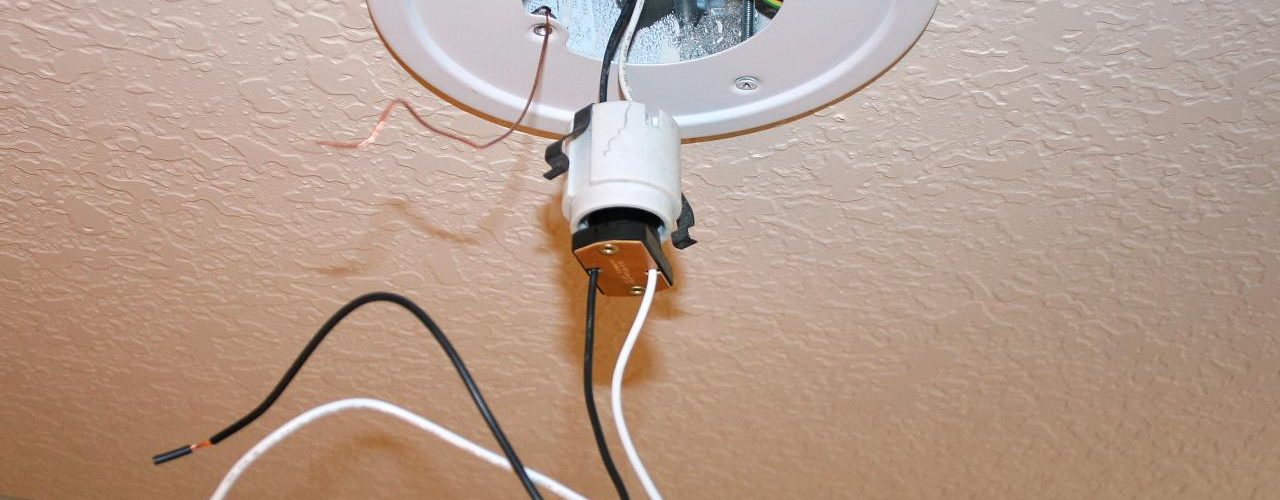When it comes to installing a ceiling light fixture there really is no one way. The reason is because of the many different types of ceiling light fixtures. You have the ceiling fan/light combination, track lighting, recessed lighting, and many others. I will try to answer many of the basics for the ceiling installation process.
The first thing that is a universal with all ceiling lights is electrical. In most homes you have 110 volt wiring. This wiring is fairly simple. You have three wires with 110v wiring from the house. While most light fixtures will have the same three wires to connect there are those light fixtures that will have more then three wires. An example of this would be the ceiling fan/light fixtures.
If you have a ceiling fan or other light fixture with more then three wires don’t panic. The wires are still basically the same the extra wires are usually just an extra power wire to give power to the fan and light separately.
The first step with the wiring is to make sure you have the power turned off. Electrical shock is no joke. Besides it hurting you it can ruin your tools.
The tools that you commonly have to use for electrical are; screwdrivers (both flat head and Philips head), a wire cutter/stripper, electrical meter, and wire nuts or electrical tape.
With 110v wiring the wires are normally white, black and green. The white wire is your common, the black is your power, and the green is your ground. For most ceiling light fixtures they will be set with the three same wires colored the same. You just connect the wires to the same color.
If your light fixture wires are different you will need to read the wiring diagram that comes with the light fixture. It will tell you which wires are the power, the common, and the ground.
For changing out a ceiling fan or existing light fixture we are half way there as the electrical box will already be in place. If we do not have electric to where the light is we will need to run electric and install an electrical box. For most people this may involve hiring an electrician. The codes are different for ever community so the first thing you should do is check your electrical codes.
For most 110v wiring you can just use romex wire. This wire is plastic coated and has all three of your wires incased in the protective coating. If you check with your local electrical supply store or home improvement store they will usually let you know what you need to comply with your local electrical codes.
Run your romex wire from your electrical power supply that you choose. You will want a 4×4 electrical box. When I install the box I like to use the deep box rather then the standard box. It gives you more room for all your wires. You need to mount the box to one of your 2×4 ceiling studs.
Most light fixtures come with mounting brackets. These are either mounted on the electrical box or screwed to the ceiling. When at all possible you want to try and align the brackets so they are secured to your joist in the ceiling.
Once the mounting brackets and wire are all properly installed the final step is to mount the ceiling light fixture to the brackets. Once everything is installed it is now time to turn the power back on to check to see that the fixture is operating properly.
One last thing to remember is when installing the light bulbs the bulbs are different styles and wattages. You need to make sure you have the proper wattage bulb and style bulb for the light fixture you installed.
Lights depending on the type have a tendency to give off heat. The heat from these bulbs can be quite significant. If you use the wrong bulbs you could actually ruin your new light fixture.



